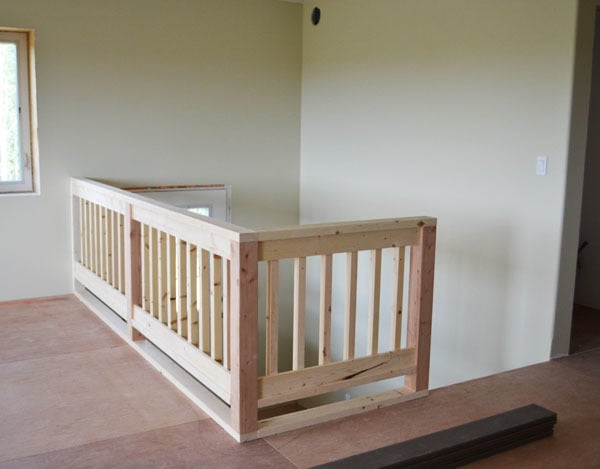
How to DIY a wood handrail - free plans from Ana-White.com

Preparation
4x4s for posts
2x4s for horizontal supports
2x2s for balusters
1x4s for trim over balusters
3" screws for attacing 2x4s to 4x4 posts
2 1/2" pocket hole screws for attaching 2x4s to 4x4 posts and balusters
Screws or hardware for attaching handrail to building
Handrail is cut to fit -
Please read through the entire plan and all comments before beginning this project. It is also advisable to review the Getting Started Section. Take all necessary precautions to build safely and smartly. Work on a clean level surface, free of imperfections or debris. Always use straight boards. Check for square after each step. Always predrill holes before attaching with screws. Use glue with finish nails for a stronger hold. Wipe excess glue off bare wood for stained projects, as dried glue will not take stain. Be safe, have fun, and ask for help if you need it. Good luck!
Instructions
Step 1
Once you have your handrail figured out, start by building the main straight section. The top 2x4 and bottom 2x4 should be the overall length of your straight section. 4x4 posts are attached with 3" countersunk screws and wood glue through top and bottom.
If your handrail extends more than 6 feet (check local codes for spans) you will also need to add additional 4x4 posts to meet codes. We centered our center 4x4 posts:
Step 2
Step 3
Now you'll need to figure how many balusters you will need.
This may take some thinking - consider the width of your balusters and spacings, and then end spacings.
Once you know how many balusters you'll need, if it is an ODD number of balusters, attach a baluster through 1 1/2" pocket holes to the center of the railing section as noted in the diagram.
If you need an EVEN number of balusters, the center will be a spacing. So find the center, and measure 1/2 the distance of your spacing off the center. Attach a baluster here.
Step 4
Step 6
It is always recommended to apply a test coat on a hidden area or scrap piece to ensure color evenness and adhesion. Use primer or wood conditioner as needed.


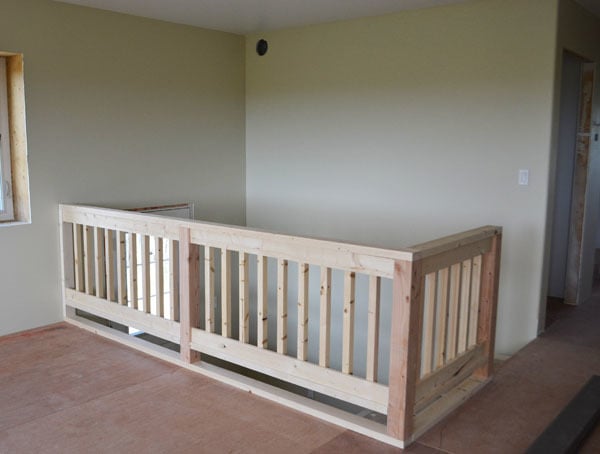














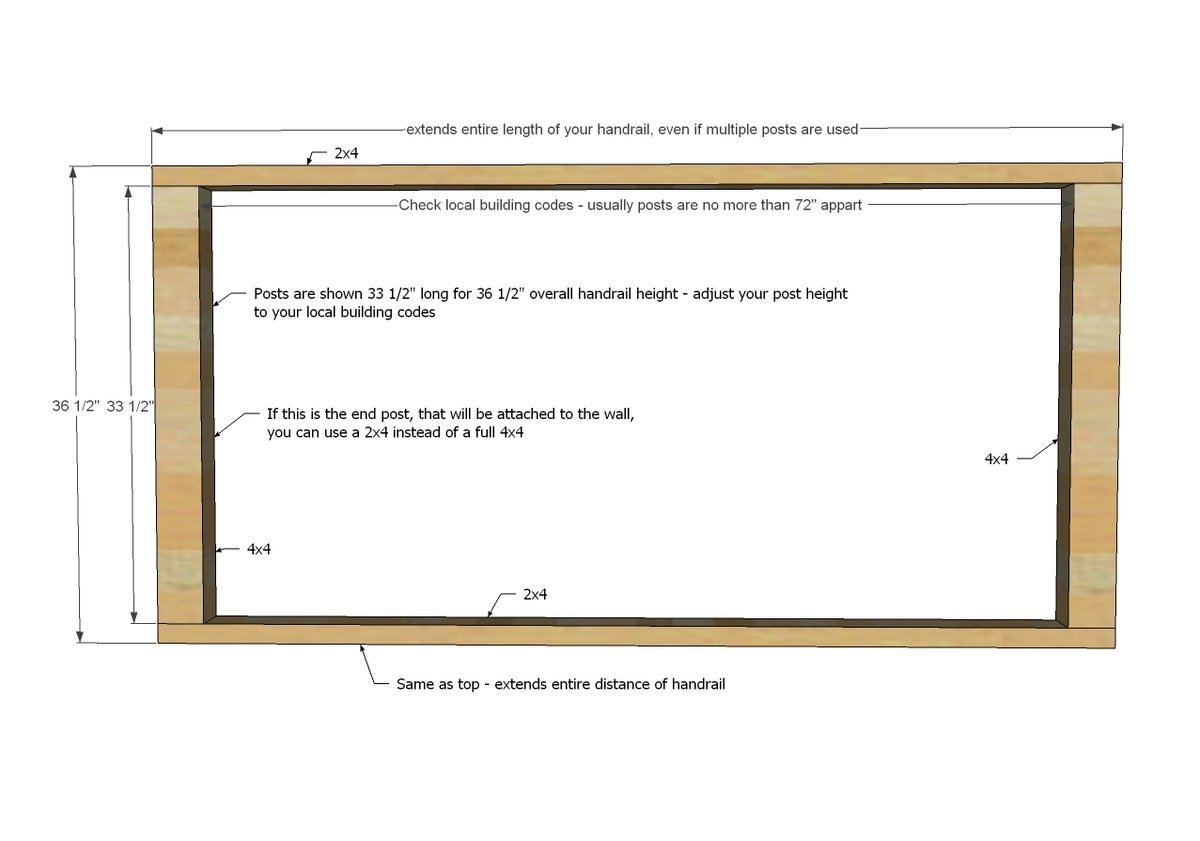
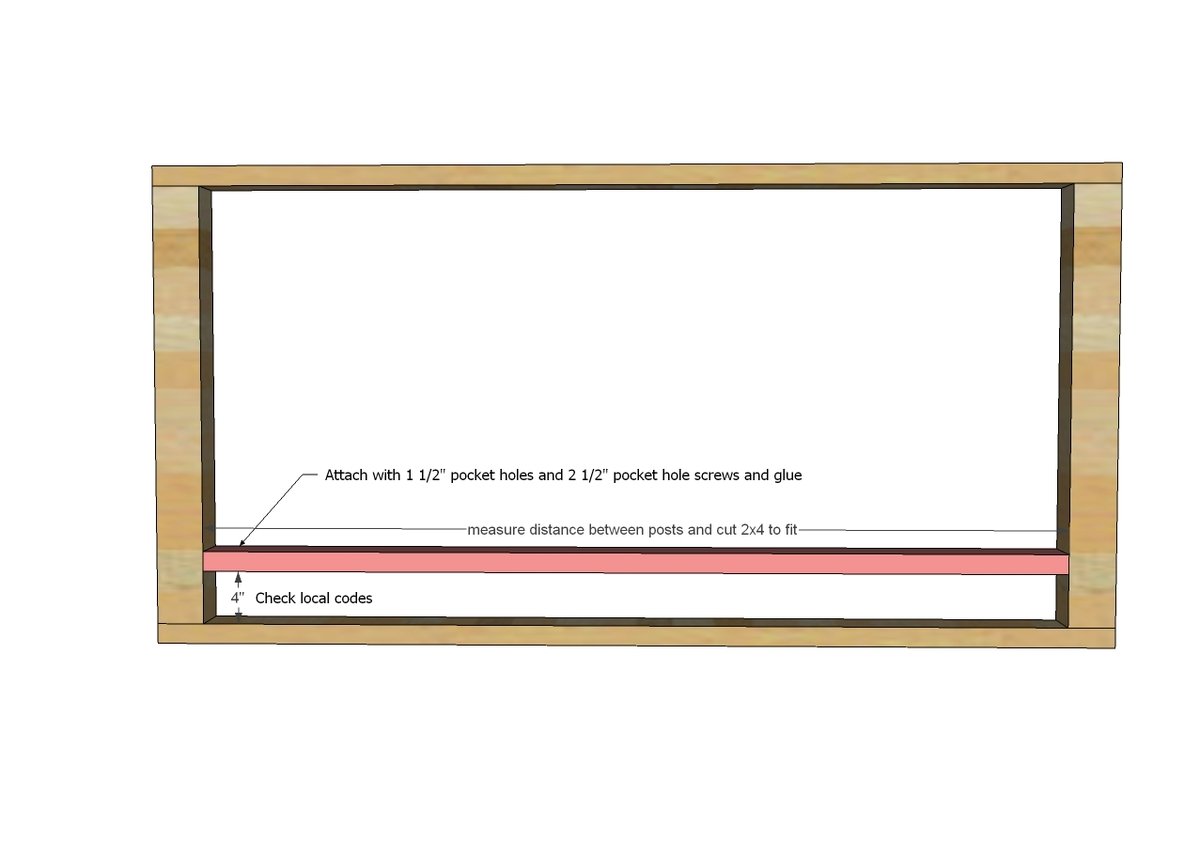
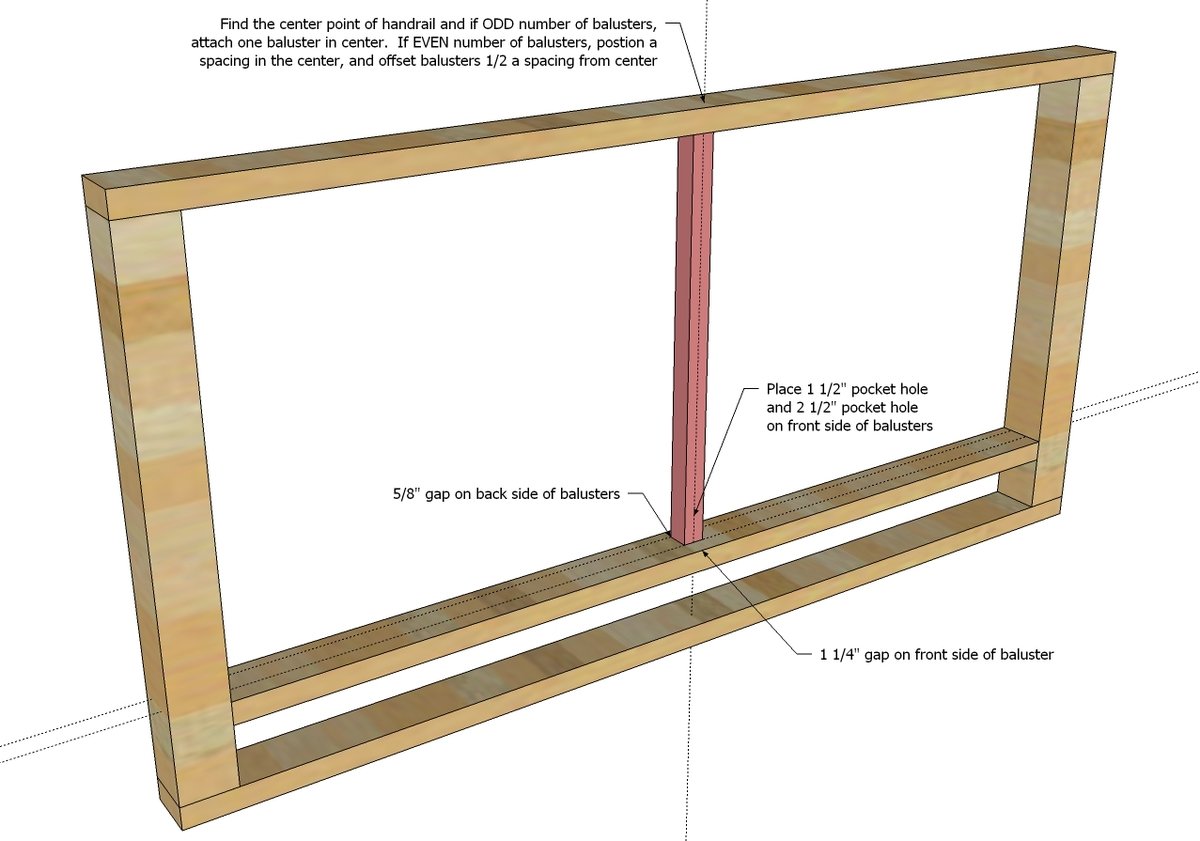
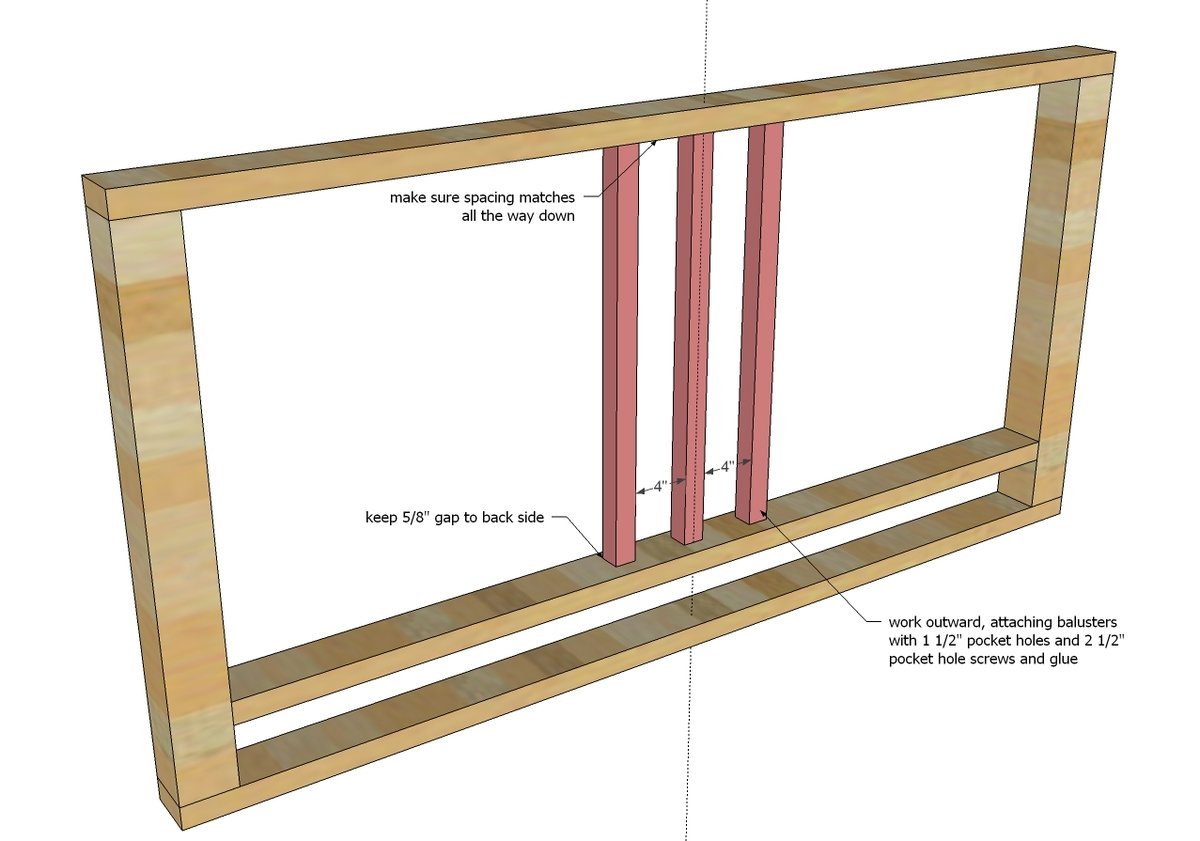


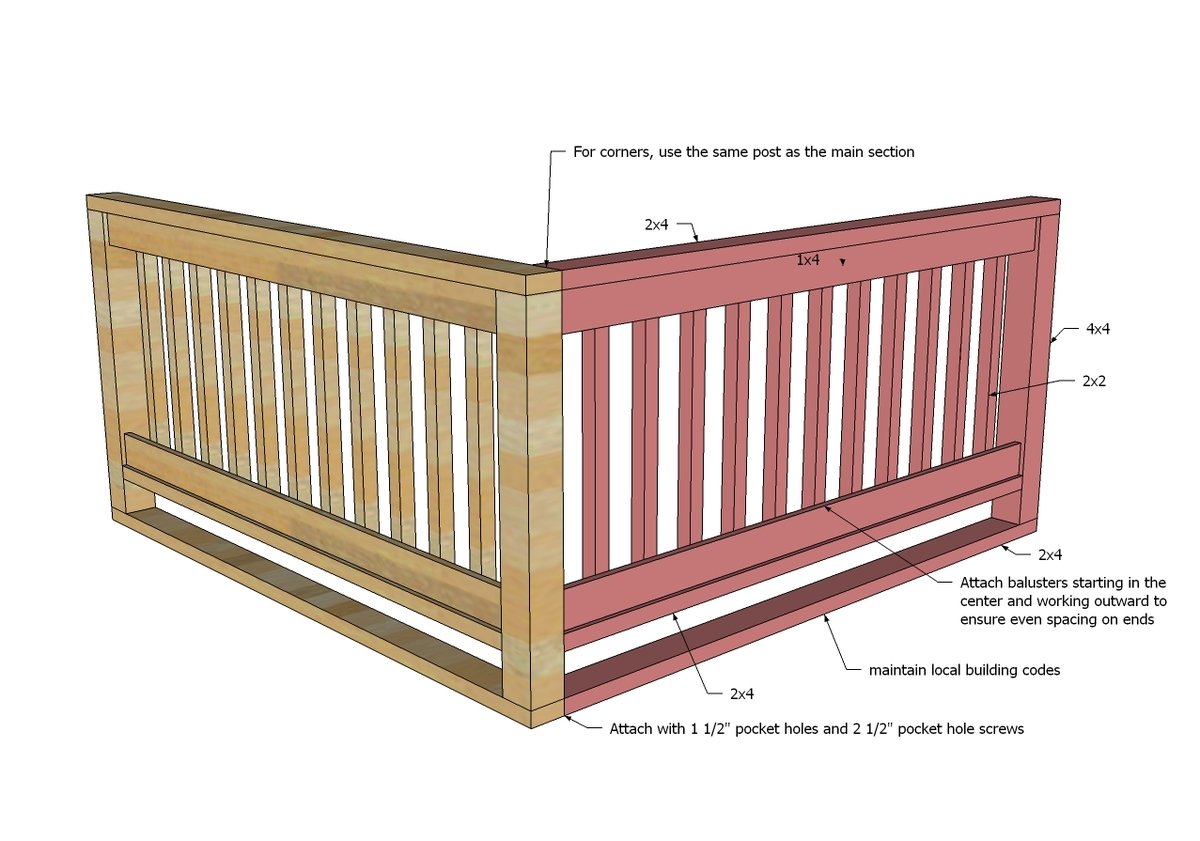
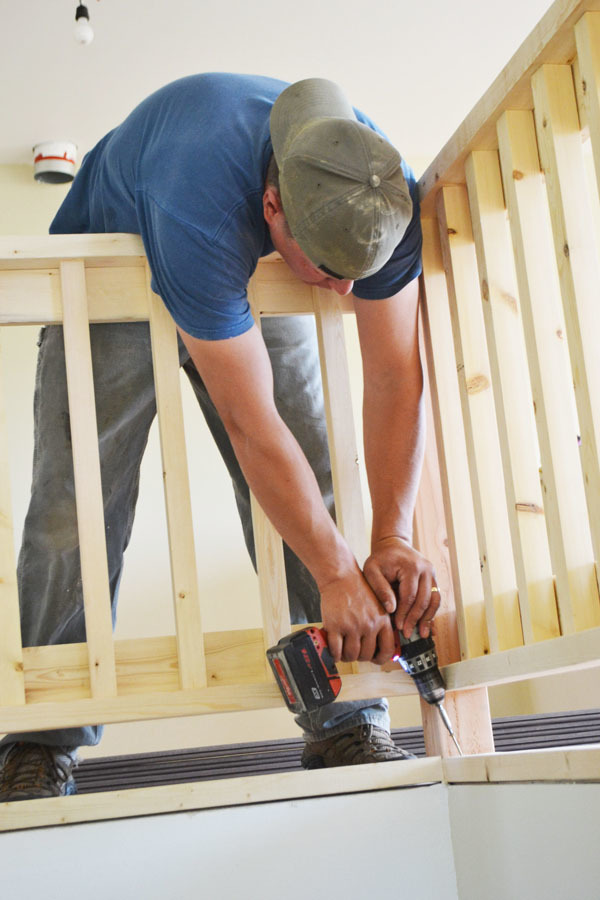


Comments
dmcarwin
Wed, 07/17/2013 - 12:51
Amazing!
You will never cease to amaze me! Great plan, and I am so excited for you!
TeeVee
Wed, 07/24/2013 - 10:11
Beautiful!
You have inspired me to change the one we have in our entrance. Love this! Thanks so much for the plans and detailed instructions! We have all our wood, and bought a Kreg Jig finally!!! Can't wait!! How are you going to finish your banister? Tracey
nicholaix
Thu, 09/12/2013 - 09:14
Yay!
I need to replace an unsafe iron railing and this is perfect. I also need the one that goes up the stairs, did you finish it? I can't find it here on the site.
I am impressed with this design and its simplicity, looks like a much more expensive one.
rolfjw
Sat, 08/06/2022 - 04:27
Great plan!
I followed this handrail plan exactly as described and it worked out great! I’ve never built something like this and everyone thought it was done by a professional contractor. Thank you for the plans!